“Exits, Entrances and Crossroads” by Margaret Lear
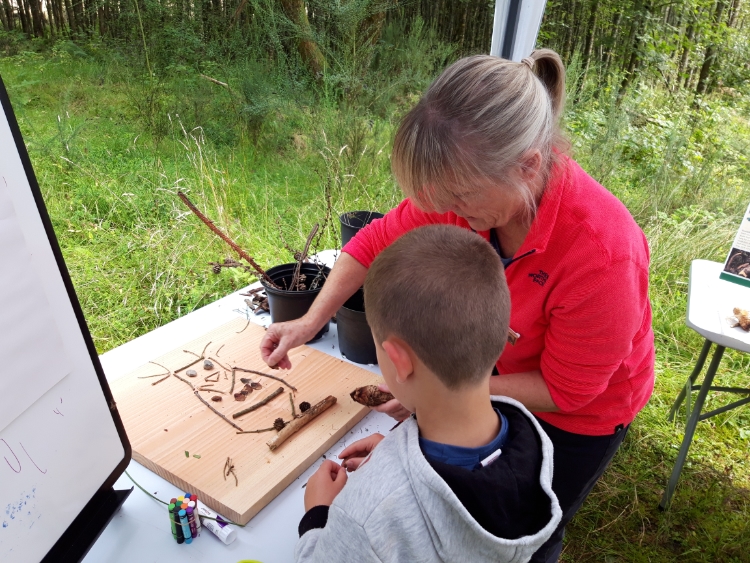
Is there an artist in the wood?
There is, really, only one easy way into and out of Five Mile Wood – at least in October. That’s from the south end on the Stanley to New Mill cottages road – currently a bit of a no man’s land thanks to the dualling of the A9. Here the track is clear, broad, made for forestry vehicles – and you can even park! At the north end, there is also the old straight track I’ve written about before, from South Barns and beyond that, with a diversion to Bankfoot. Follow the line of this track and it will take you to Dunkeld, once a mighty ecclesiastical seat. I learned last week that from Dunkeld to the wood it’s five miles – hence the name.
“What We Choose to Eat from the Woods” by Margaret Lear
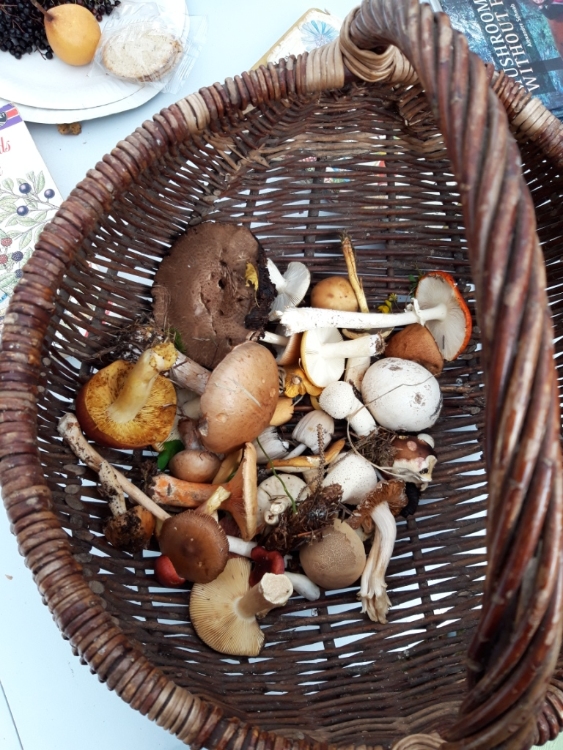
As soon as I entered Taymount Wood, I smelt mushrooms. Across in the pattering shade of the woods to my left, a family was ducking and diving and exclaiming across the ditches to each other. I could glimpse baskets, a small dog, a child or two. Great! I thought, people foraging. Good luck! With chanterelles from a previous forage in my fridge, I just wanted to walk without expectations or intent. Looking for late summer flowers, I was taken by the large numbers of Wild Angelica growing either side of the path.
“THE MUSHROOM AT THE END OF THE WOOD” by Margaret Lear
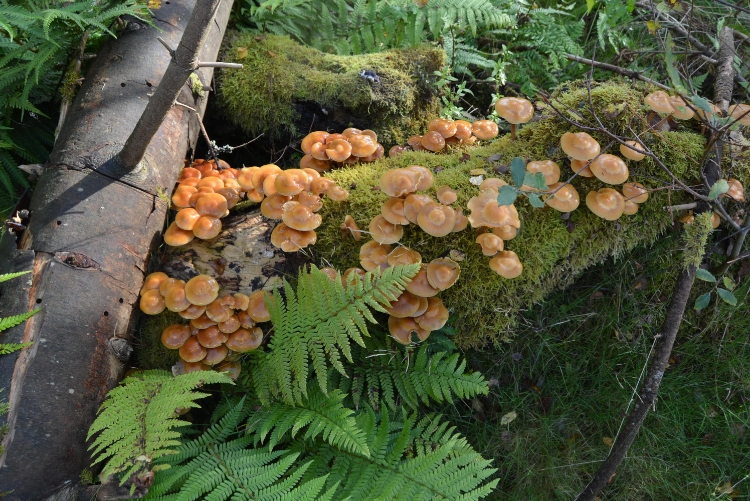
In Anna Tsing’s book The Mushroom at the End of the World*, she tells the story of landscapes ruined – or seemingly ruined – by the greed of human activity. In particular, forests. In one unpromising forest in Oregon USA, where commercial forestry had stripped out all the trees of value and left an empty terrain of broken ground and scrubby volunteer pines, she met some mushroom hunters, refugees from Laos. They were gathering Matsutake, one of the most prized and valuable edible mushrooms in Japan and – allegedly – the first living organisms to appear from the wreckage of Hiroshima after the Bomb.
“THE WET SIDE OF THE WOOD” by Margaret Lear
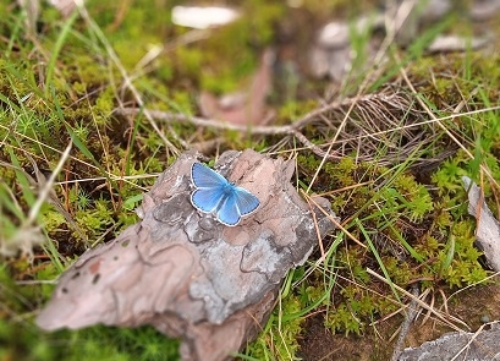
Five Mile Wood right now is a wood half-forested, half scrub and heath. When the Forestry Commission took out the last tree crop, they left a fragile fringe, largely of Scots Pine, around the north-east side of the circular path that now forms almost the only access to the main part of the wood. The Benchil burn trickles through and under the path here, on its way to the Tay, and water from the high water table of the central area percolates into a series of path- side ditches and curious water-holes made by a forestry digger. This is the wet side of the wood. While the trees must take up a lot of water, their canopy also prevents evaporation, and after recent heavy rain, the glades and ditches are alive with summer flowers and butterflies.
“CREEPING UP ON KING’S MYRE” by Margaret Lear
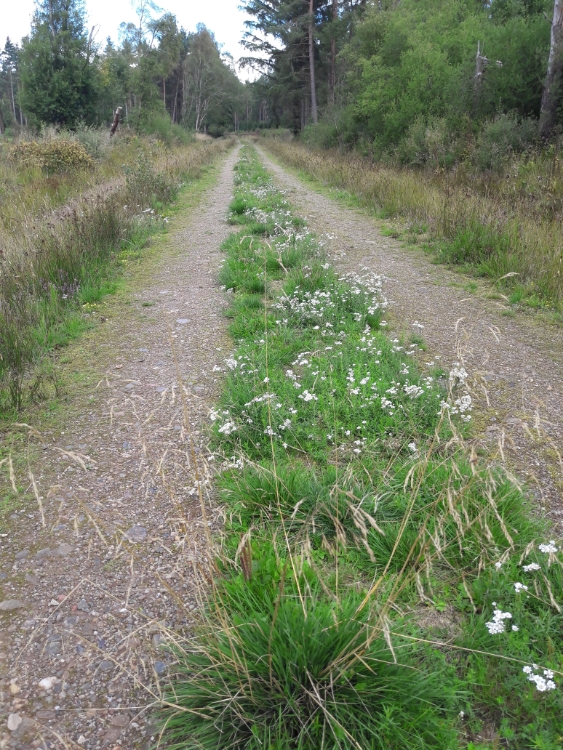
Hot, sunshine, slight breeze – a day to cycle to a cool and shady place. We’d often thought about walking into Taymount Wood by the core footpath from Airntully, but before lockdown hadn’t considered cycling all the way from Bankfoot. We left the village on the Stewart Dairy road, in normal times screeching with haring rat-runners with no conception of cyclists or passing places, and up the steep Barns Brae. This we accomplished without pause for breath, thanks to the electric bikes! We were caught out at the top by two “proper” cyclists who had stopped to recover, and who tried very hard, in a typical show of pandemic goodwill, not to look supercilious.
“BEES, BUTTERFLIES AND AN OLD STRAIGHT TRACK” by Margaret Lear
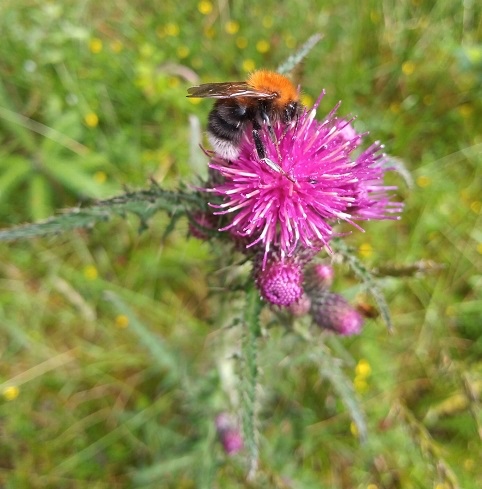
The things you do in a lockdown. I wouldn’t normally walk from the house to Five Mile Wood, I’d call in on my way to somewhere else, parking the car. It’s not an especially long walk, but since they felled most of the trees on the Bankfoot side, cavernous ditches and hollows have made the entrance to the wood treacherous, wet and debateable, and the track to get there goes on a bit and is not especially interesting. Or so I thought.
“Ambushed by Birdsong in Taymount Wood”
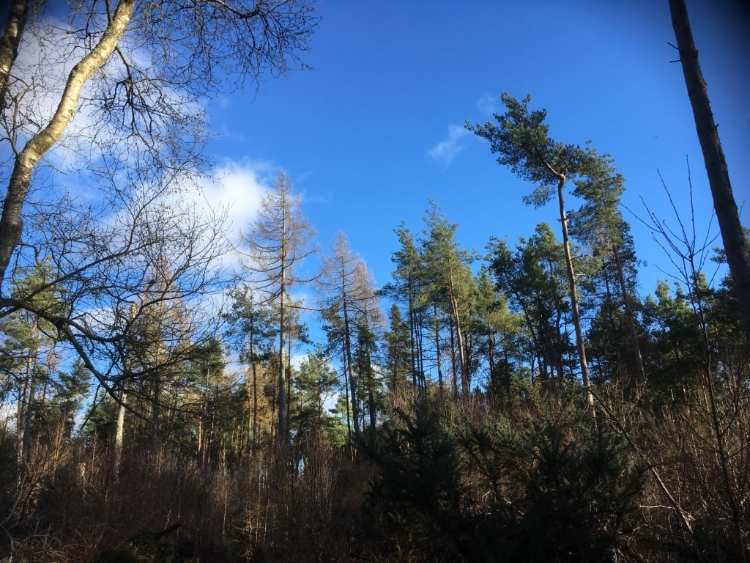
“Much laid plans” and all that. I knew exactly what I was going to write about in my second post for West Stormont Woodland Group. It involved walking quickly and without distraction to King’s Myre in Taymount Wood. But on this sunny, yet briskly chilly morning in March, the birds had other plans for us. We hadn’t got far when the dog was infuriated by an ear-piercing whistling made, apparently, by a bush.
“A February Morning at Five Mile Wood”
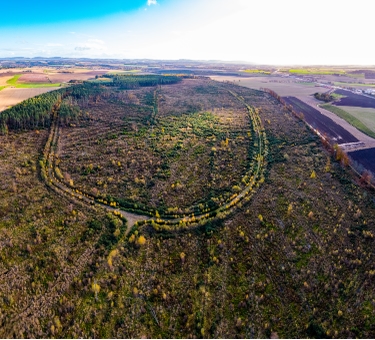
Dreich doesn’t begin to cover it. Weeks of rain, sleet or snow, and the wood is wet, dank, chilly. One storm has passed, another is forecast, and a group of multi-stemmed birches, green with lichen and algae, droop and wait despondently.
